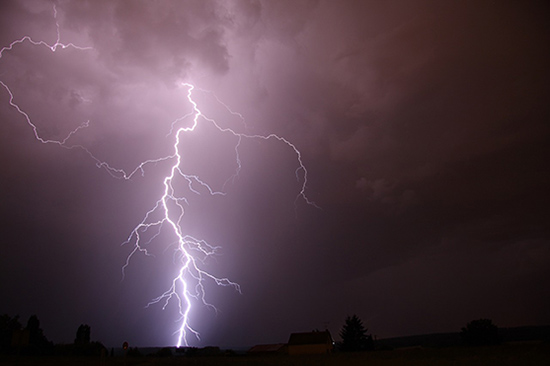Boom! A large thunderhead claps nearby, seeming to be right above your house. Moments earlier, a bright flash of light lit up the night outside. Rain drops heavily on the roof as the weather becomes more severe. When large storms such as this one occur, it is amazing to see what actually causes these weather phenomena. During mid-summer and early fall, storms become more common as the temperature varies between two extremes. As a result, thunderstorms are formed. Here is a basic breakdown of how storms work for the next time thunder and lightning strike:
 It all starts as the hot summer sun heats up the earth’s surface through its rays.
It all starts as the hot summer sun heats up the earth’s surface through its rays.- As a result of conduction, the air directly above the surface heats up also.
- When this occurs, the warm air rises, and consequently, the cold air sinks.
- Since warm air is naturally less dense than cold air, this transfers heat from the ground to the upper levels of the sky.
- These two factors of thunderstorms, unstable air and moisture, create the three basic types of storms: orographic thunderstorms, air mass thunderstorms, and frontal thunderstorms.
-
- Orographic thunderstorms are formed when a mountain or hilltop forces air to rise, which begins the process of storms.
- Air mass thunderstorms result from heat transferring to other levels of the atmosphere in a single unstable atmosphere.
- Frontal thunderstorms happen outside of the lines of cold and warm fronts that begin to mingle together.
- When strong upward drafts of air are balanced out by strong downward drafts of air, a supercell thunderstorm occurs. In these types of storms, the up-drafts can have speeds of up to 90 miles an hour!
- As air in the atmosphere cools, water vapor begins to condense, and forms cumulus clouds.
- These clouds drop down their condensation in the form of precipitation.
- This process continues until the condensed vapor has all fallen to the ground.
Next time a thunderstorm hits, make it a science lesson!
“How Do Thunderstorms Form?” The Carbon Cycle, Kid’s Crossing, eo.ucar.edu/kids/dangerwx/tstorm4.htm.

